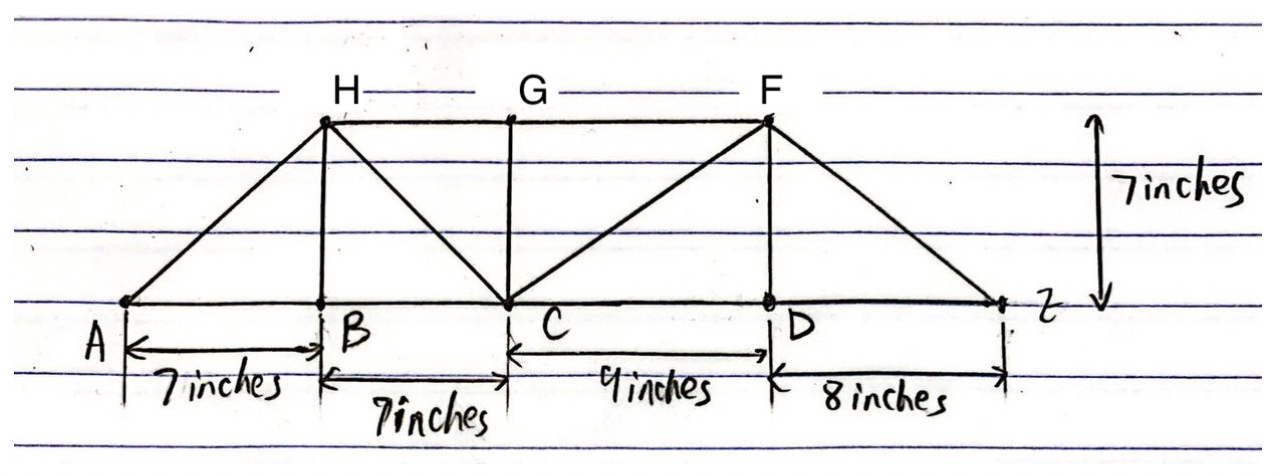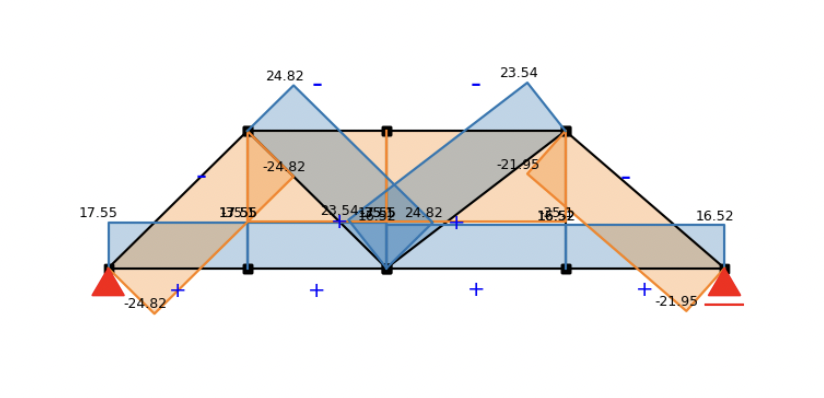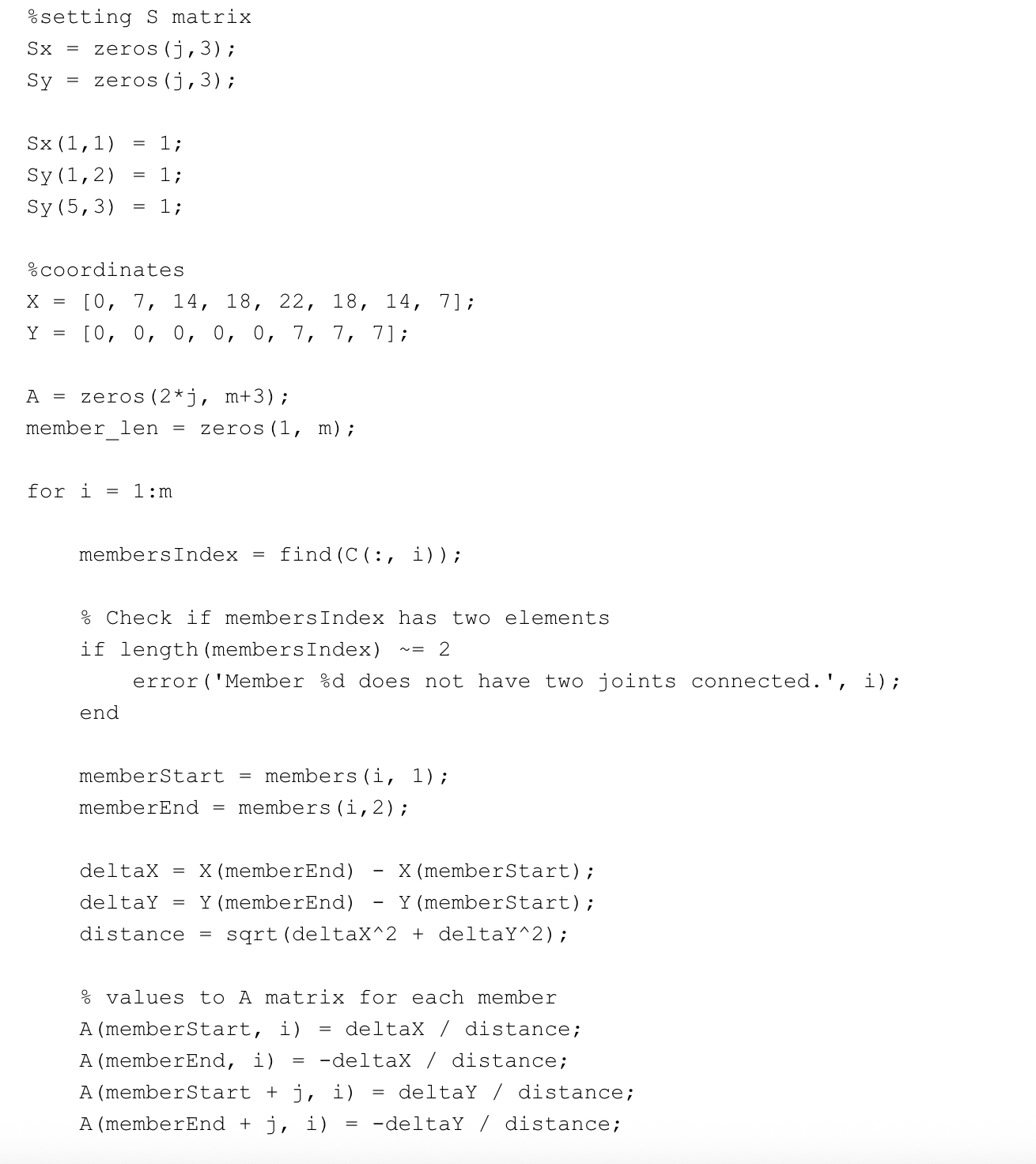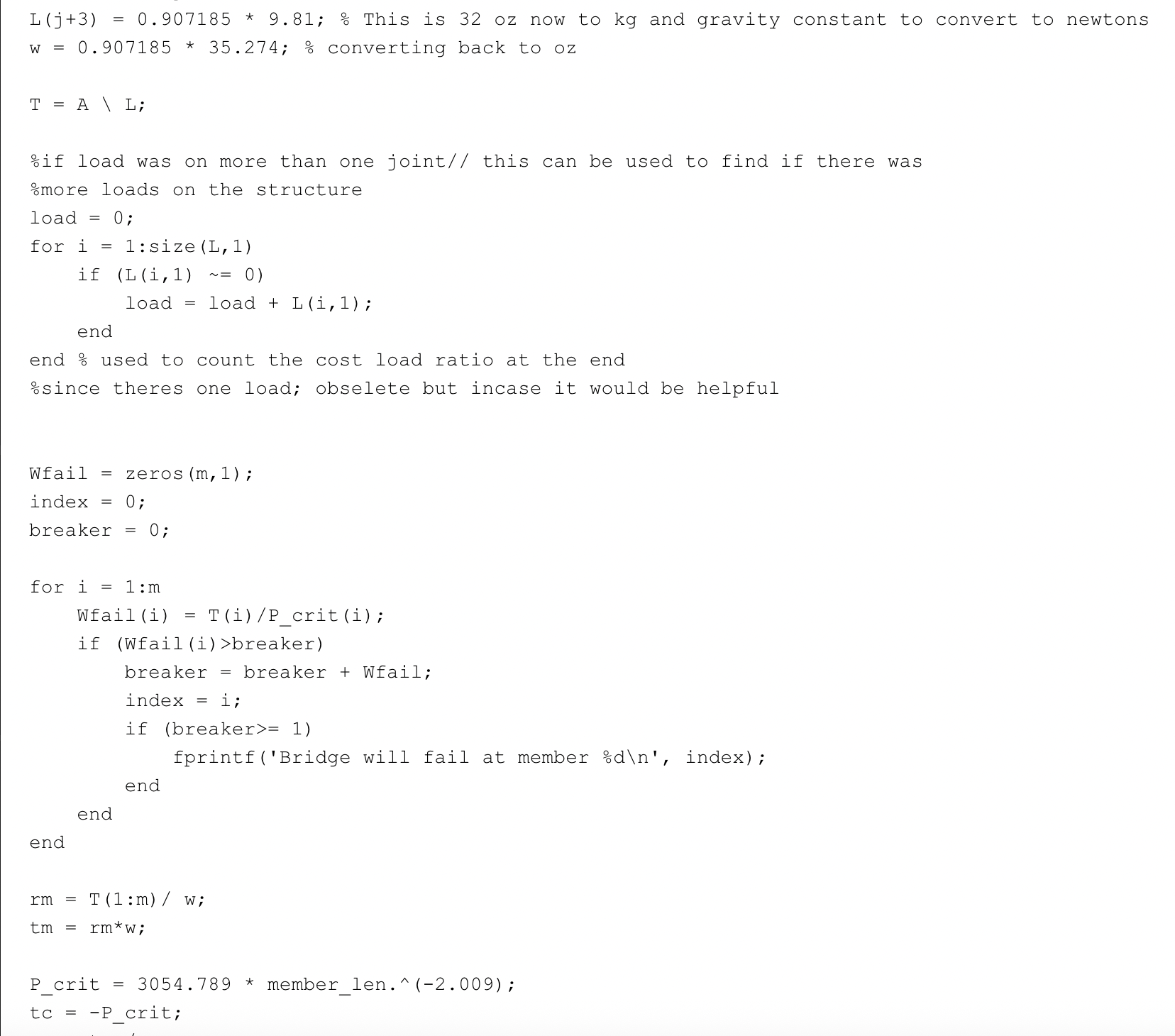%% Truss Bridge %%
Project Overview
Developed a Pratt-style truss bridge using joint method analysis and matrix-based force computation. Designed two truss variations and evaluated load distribution, buckling risk, and load-to-cost efficiency using both code and manual calculations.
Truss Calculation Method
Used the joint method with RREF matrix computations to solve for internal member forces. Negative force values indicated compression, while positive values indicated tension. Manual and code-based approaches were cross-validated for accuracy.
Results & Comparison
Design 1: Max load = 36.87±1.356oz | Load-to-cost ratio = 0.19 oz/$
Design 2: Max load = 31.26±1.849oz | Load-to-cost ratio = 0.165 oz/$
Both designs used 8 joints and ~110 inches of member length. Design 1 was selected due to its higher load capacity and better efficiency.
Conclusion
The Pratt truss design proved most effective. To further optimize, we recommend reducing member lengths via node adjustments. Computer analysis improved accuracy and accelerated testing of multiple design iterations.
Team Members
Jindong Feng, Ana Jaquez-Zarate, and Melissa Regalado




